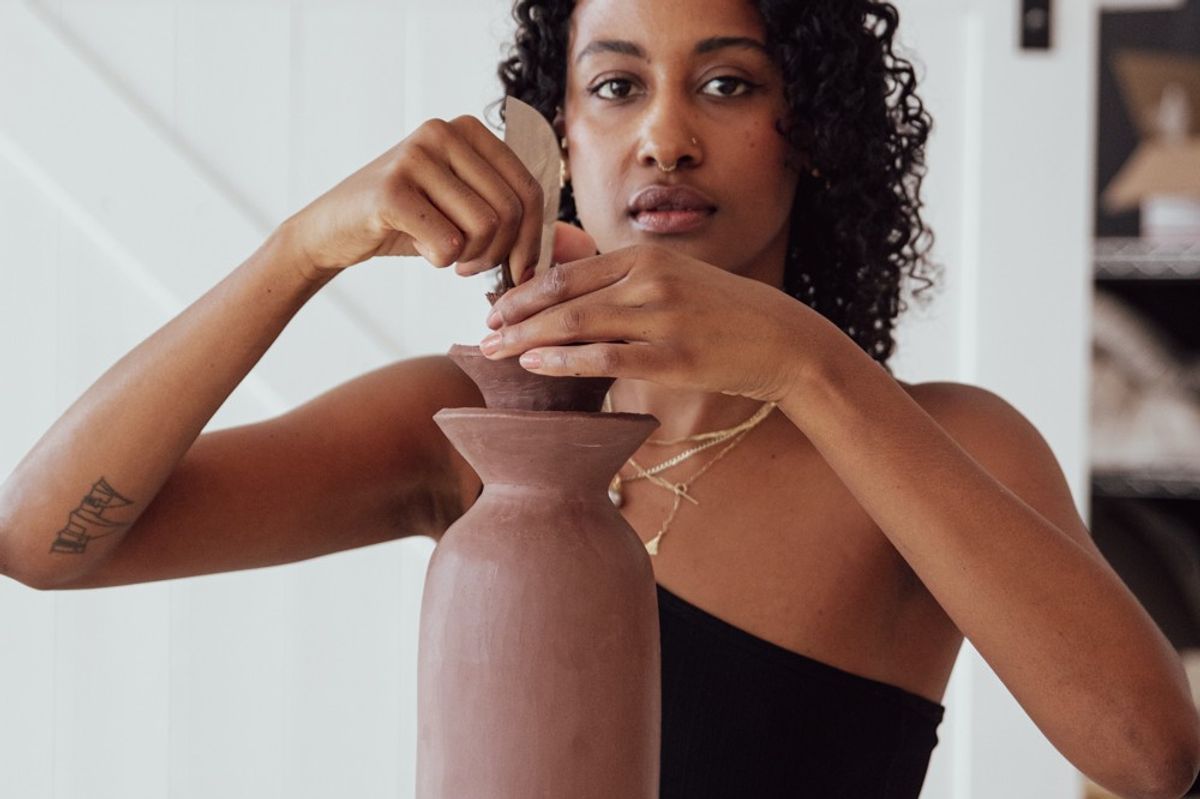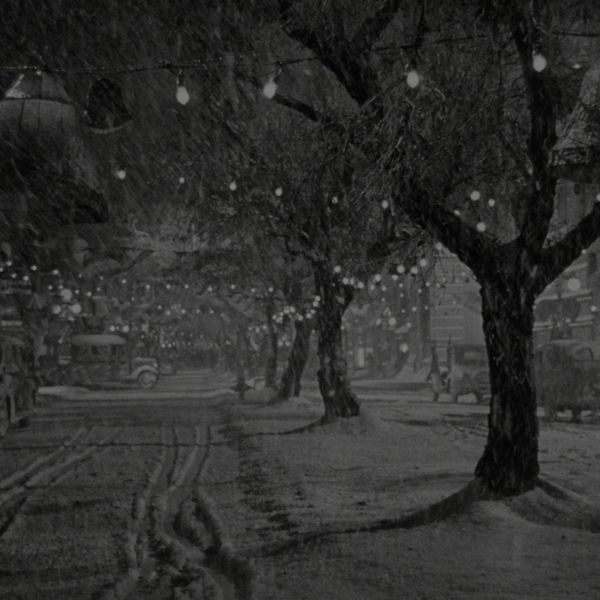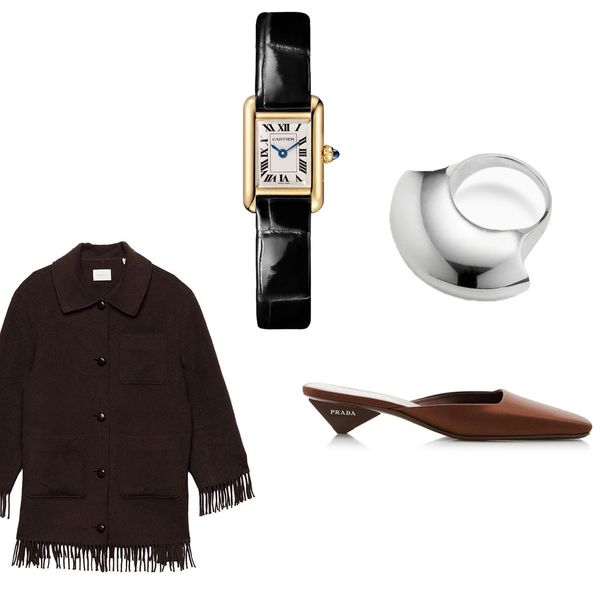Dina Nur Satti Turns Clay Into Cultural Memory
Meet the Brooklyn-based artist bringing history—and healing—into her practice.
When I first meet Dina Nur Satti, it’s not in a gallery or studio, but at a dinner mostly full of fashion editors, where she leads us through a tea ritual. The room stills almost immediately when she begins—not because she demands it, but because her presence does. Dina speaks softly, deliberately, with the kind of grounded magnetism that made me lean in closer, entranced. There’s a patience to her cadence, a sense that every word has been chosen with intention. She has that rare gift of commanding attention without ever needing to raise her voice.
It makes sense, then, that her art carries that same energy—measured, contemplative, and deeply rooted in something larger than herself. Through clay, she tells stories about belonging and lineage, about the ways memory gets stored not just in our bodies, but in the materials that have shaped human life for millennia. Born to a Somali mother and Sudanese father, and raised between Paris and Nairobi, Dina’s world is one of multiplicity and movement—and yet her ceramics feel like home: sturdy, soulful, ancient.
Her most recent exhibition, Sediments, is an ode to the Nile and the Indian Ocean, but also to the quiet ways identity settles and transforms when we’re far from where we began. Each of her vessels feels like a meditation on history and inheritance, a way to trace the threads between land, ancestry, and the self. In a world obsessed with speed and surface, Dina’s work reminds us of the beauty—and necessity—of slowing down to remember.
Ahead, we talk about art, ancestors and ancient objects.
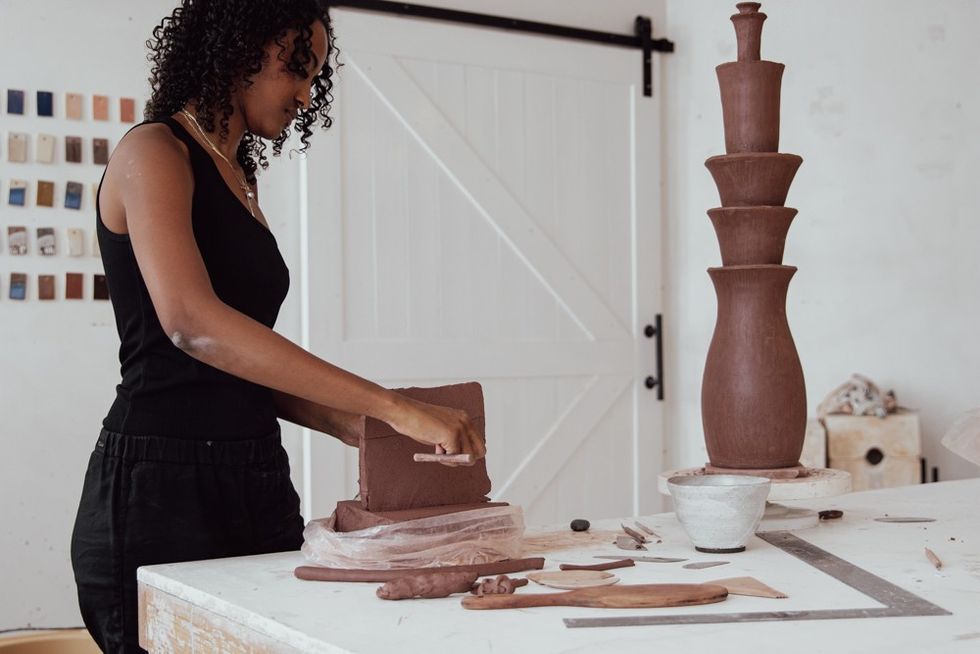
What is your cultural background and heritage?
My mother is from Somalia and my father is from Sudan and I was raised in Paris, France and Nairobi, Kenya.
How does your background influence the way you approach your art?
The advantage of being exposed to so many different cultures is being able to belong to parts of a culture, but be on the outside of it at the same time. It gives you a very unique point of view when it comes to understanding how cultures are formed and the threads of similarity that run through objectively different traditions.
What was your first memory of art?
I would attend Somali weddings with my mother and I was in awe of a form of women’s poetry we have called Baraanbur. These poems are sung accompanied with a drum and they are recited to transmit blessing and protection and exalt the bride’s lineage.
How did you first get into ceramics?
My most vivid experience of ceramics was from summers in Sudan. We have water storage amphorae called Zir that traditionally are placed outside of homes. The clay keeps the water cool in the desert heat and they are placed outside for travelers to drink from, which speaks to the culture of hospitality in Sudan. This is an example of how objects and their use can tell us about the values of the culture they belong to.
Out of all the artistic mediums, what led you to ceramics?
I believe ceramics is the medium I was drawn to because it is one of the oldest forms of art. Everyone likely has someone in their lineage that made pottery at some point in history and the universality of the medium speaks to me.
My father’s family is Nubian and we have one of the oldest lineages of pottery in Africa, so pottery for me has always been about having a medium through which I can learn more about where I come from and connect with my heritage.
I am fascinated by ancient objects, especially ones used in ritual, both sacred and profan, since they teach us so much about how people lived and what they believed in.
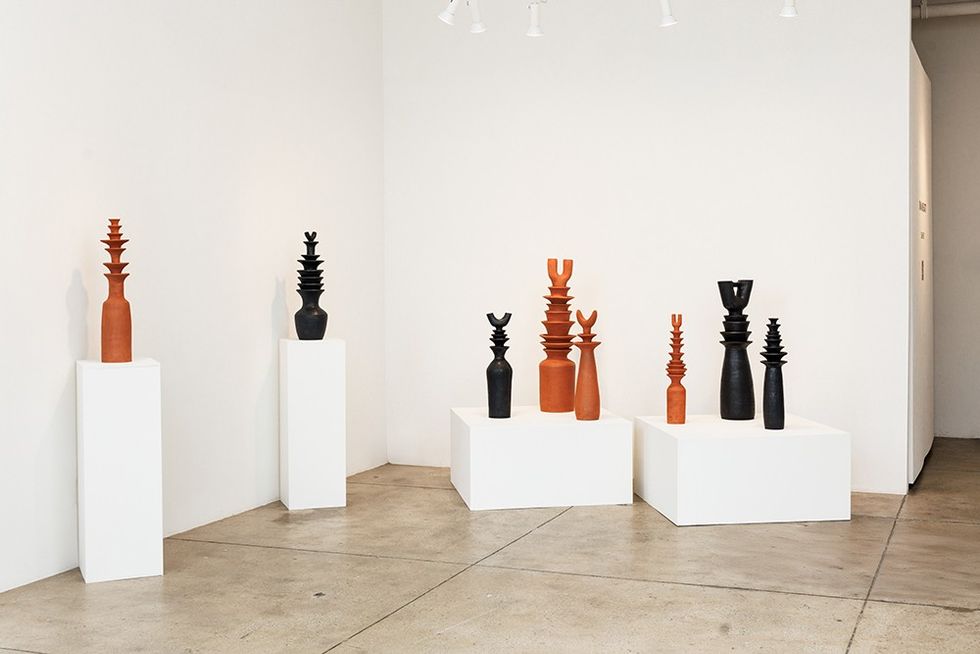
You just had a solo show, Sediments (congrats!). What was the message you were trying to convey?
The title of my solo show, Sediments, is an ode to the Nile that runs through Sudan and the Indian Ocean off the coast of Somalia. More obviously, it also speaks to the organic matter than makes up the composition of clay.
The sediments are also those parts of ourselves that must learn to settle when we are away from our homelands. I hope that the show speaks to a deeper sense of home we can find within ourselves.
Do you have a piece from the exhibition that's most meaningful?
One of my favorite pieces from the show is called Deffufa Lotus I. I connect to it because it’s a piece that has an oval body that is different from past shapes I have previously made. Something about its shape reminded me of the Deffufas; 65-foot-tall Nubian mud brick temples of ancient Kerma, which is the oldest structure in the Nile Valley constructed some 4,000 years ago.
The red and black ceramics discovered at this site are what inspired the red and black color choice of the pieces in the show.
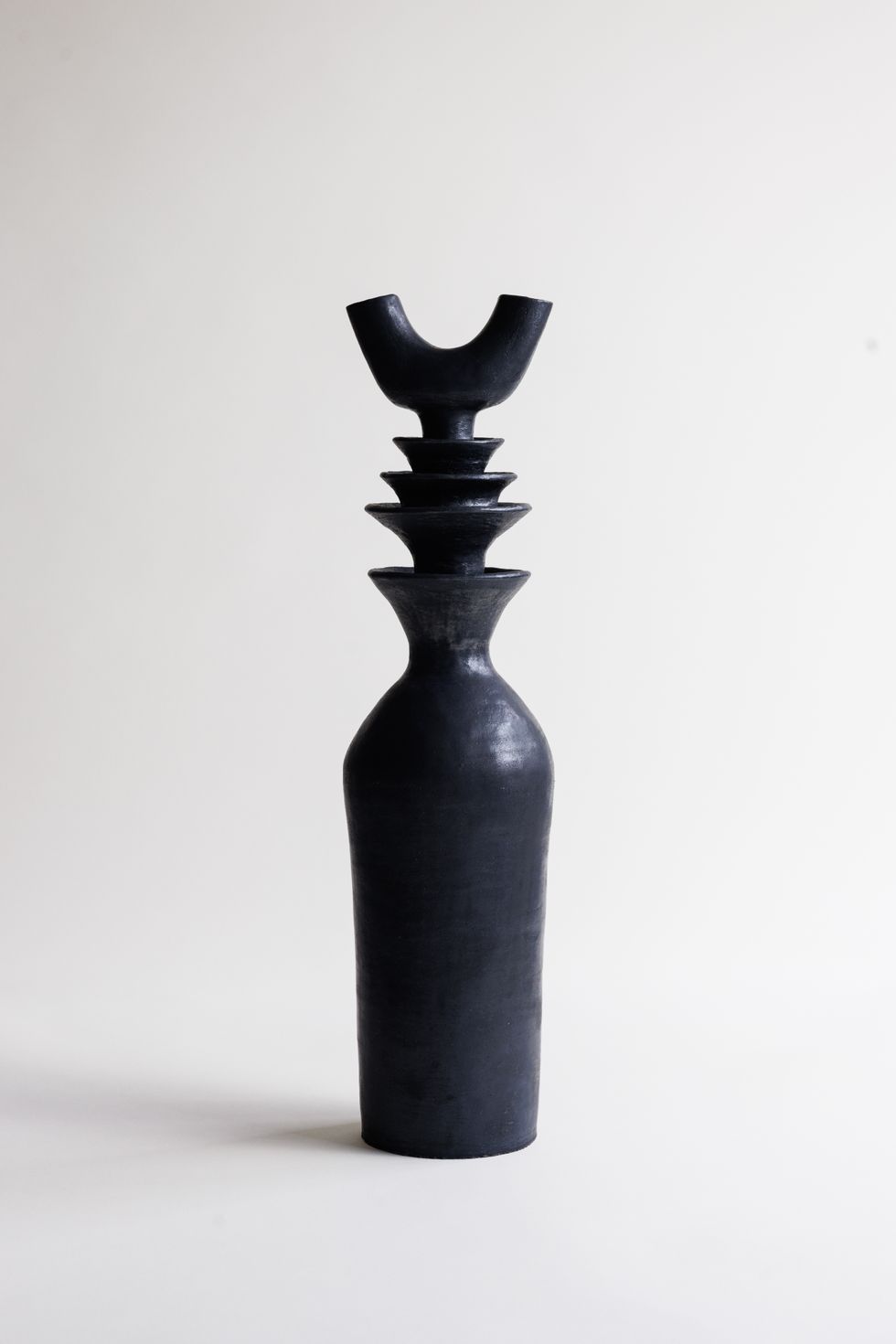
Transformation and resilience seem to be common themes in your work. Can you share more about where these themes stem from?
Transformation is captured in the alchemy of clay through its use of the four elements; earth in the clay that is formed, water to shape the clay, air to dry the clay, and fire to transform the clay into ceramic. To me, this transformation represents the resilience we need to embody in order to come to terms with the collective and personal legacies we have inherited.
My work poses the question of: how do we come to terms with the traditions that have been alive within our lineages for thousands of years, and that sudden breaking of intergenerational knowledge within just one, two, or three generations?
I also strongly believe that every place across the world was once what we consider ‘indigenous,’ no matter the current racial or cultural association.
The differentiating variable is how recently that culture was colonized into systems of patriarchy and extractive economics. The weight of that fragmentation is much heavier for descendents of cultures that have more recently been colonized, since the memory of that indigeneity lives much more strongly in their epigenetics.
I believe that our lineages live within us no matter how many generations ago they were erased. There is a resilience to our ancestral heritage that we cannot escape and that we can learn from if we know how to connect to it. Working with such an ancient material as clay is a conduit for that work.
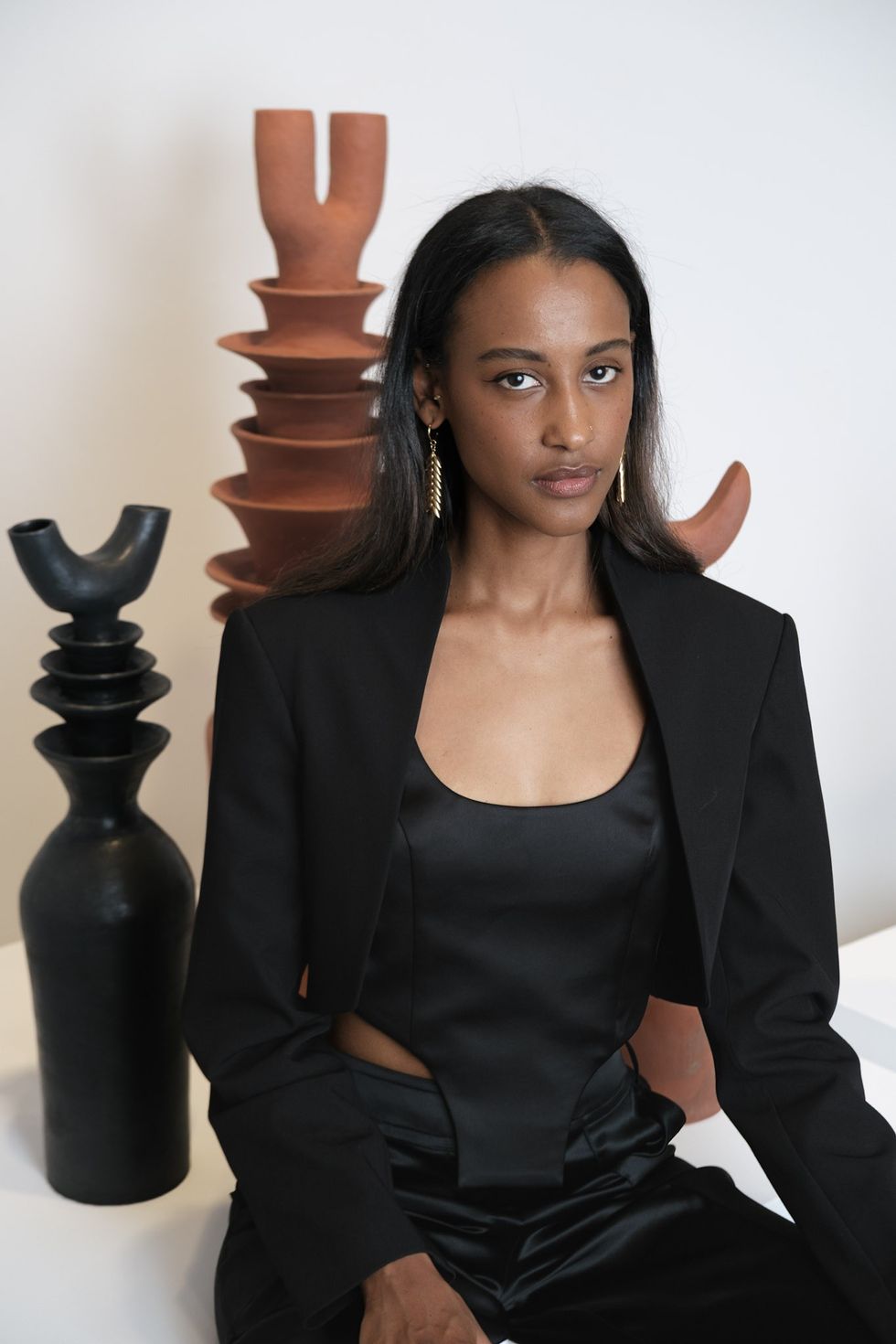
What goes on in your head when you're creating your art?
Much of my preparation ahead of making work involves researching threads of curiosity that build upon the foundational themes of my practice. With this information in my subconscious, I allow my intuition to follow where the shapes want to go and what the clay wants to become.
The themes I have been researching make their way into the work in the forms of symbols and patterns. I often step back to find that the sculpture I created is beyond what I could have come up with had I sketched it first.
What's on the playlist when you are in the studio?
When I’m working in the studio I gravitate towards music that feels transcendent and reflects the feeling I want to convey in my pieces. It spans across many genres but I am most drawn to music from across the Sahara and East Africa and traditional music from around the world that is based on non-Western musical scales.I have a playlist on Spotify called ‘Playlist for Artistic Transcendence’.
You seem very in tune with yourself. Do you have any spiritual practices you swear by?
One of the practices a friend shared with me is to reflect on what part of your ‘self’ a decision is coming from. Is it coming from your extractive or compassionate self? When you reorient your decision making to serve the best outcome for all those involved, it shifts the quality of your relationships.
What message or legacy do you hope your art conveys?
Through my work I aim to connect to themes that are universal to the human experience. One of the themes that I explore is nostalgia for a time past and the sense of loss that comes with the disappearance of cultures and traditions. We are at a very unique time in history where many people are the first of their generation to grow up outside of their respective home countries there is a sense of ‘home’ that is missing.
I hope that my work inspires people to question the default historical frameworks that they have been taught, so that they can understand where they come from, which is a crucial step in defining who we are.

